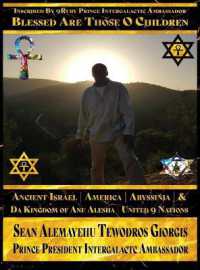Full Description
In today's technological and globalised world, music remains a basic dimension of society. Music, Encounter, Togetherness outlines a relational approach to music that creates space for both human agency and social relationship. Throughout the book, author Nicholas Cook puts Euro-American musical traditions into dialogue with other world music cultures, complementing theory-driven approaches with comprehensive case studies ranging from late eighteenth-century India to contemporary China, and from Debussy's encounter with Javanese music and dance to cross-cultural musicking in Australia and in cyberspace. Through these examples, Cook examines how music affords interpersonal relationship and social togetherness, and what happens when musicians from different cultures interact.
Central to the book is the idea of encounter, which highlights the dynamic and processual nature of musicking, as much in therapy or at home as in the jazz club or concert hall. Western musicologists have traditionally thought of music as primarily a repertory of objects; Cook illustrates how thinking of it in processual terms--through an expanded idea of performance--can make as much sense of Western art music as of other traditions. In basing an understanding of music on acts rather than objects and focussing on people and their relationships rather than on the impersonal forces of evolutionary or stylistic histories, the book opens up ways of thinking that counter some of the dehumanising aspects of musical thinking and practice in global modernity.
Contents
Acknowledgements
List of illustrations
Introduction
1: Socialities of music
1.1 A zone of magic
1.2 Webs of listening
1.3 Beyond participation
2: Performing togetherness
2.1 A readiness for human company
2.2 Networks of musicking
2.3 Musicking on paper
3: Dynamics of encounter
3.1 Rationalising music
3.2 Music and relational being
3.3 Dehumanising music
3.4 Hearing the call of others
4: Between Lucknow and London
4.1 Beyond suspicion
4.2 The dancing girl
4.3 Listening across cultures
4.4 The nabobina
5: Java comes to Paris
5.1 Anxieties of influence
5.2 Turning heads
5.3 Taking your memories home
5.4 Gongs in the Erard
5.5 How Debussy heard the gamelan
6: Music and modernisation in China
6.1 Visions of modernity
6.2 People's musicians
6.3 A national music
6.4 The future is China
6.5 Modernity with Chinese characteristics
7: Music in a cosmopolitan world
7.1 Shanghai then and now
7.2 Everyday cosmopolitanism
7.3 Mobilising music
8: Transcultural musicking
8.1 Imagining a new Australia
8.2 Beyond style
8.3 Virtual worlds
9: Other classics
9.1 Period remix
9.2 Modes of musical sensemaking
9.3 Vienna through the looking glass
9.4 Listening against the grain
Afterword: On certainty
References








